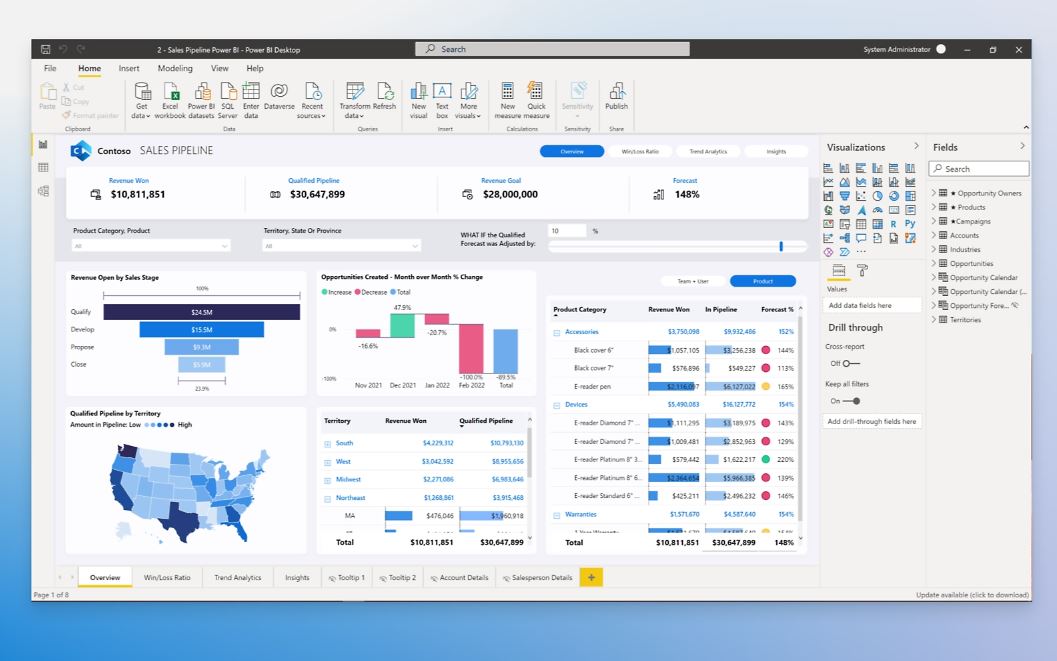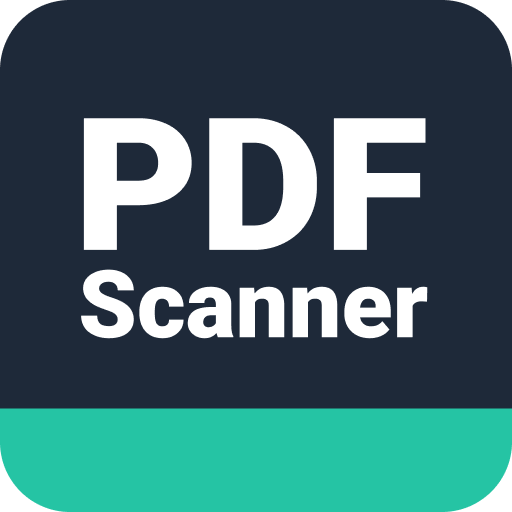Microsoft Power BI
About this app
For those seeking to optimize their data analysis and visualization process, the Microsoft Power BI App offers a comprehensive solution. This article aims to provide a detailed overview of the capabilities of this robust tool, outlining its key features and advantages. Moreover, it will guide users through the installation and configuration process, as well as offer insights into navigating the interface effectively.
Readers will gain insights into the essential functions and tools within the application, such as data visualization and collaboration options. A thorough examination of the advantages and disadvantages associated with the Microsoft Power BI App will be presented. Additionally, the article will conclude with final reflections and recommendations for users, catering to individuals ranging from data enthusiasts to business professionals alike.
Overview of Microsoft Power BI App
Microsoft Power BI is recognized as a robust business intelligence tool that offers sophisticated data visualization, in-depth analytics, and extensive reporting functionalities tailored for organizational use. Possessing a user-friendly interface and seamless compatibility with diverse data sources, Power BI enables users to effectively make data-informed decisions. The platform encompasses a plethora of features and capabilities, such as interactive dashboards, strong data modeling tools, and real-time insights provision. Leveraging a cloud-based architecture, Power BI guarantees superior performance, scalability, and customizable options to deliver individualized user experiences.
What is Microsoft Power BI?
Microsoft Power BI is a prominent business intelligence tool developed by Microsoft, with the objective of give the power toing organizations to visualize their data, extract valuable insights, and generate detailed reports. This tool presents robust features for data visualization, facilitating the development of interactive dashboards and in-depth analytics. Focused on business intelligence, Power BI equips users to make well-informed decisions based on up-to-date data, thereby enhancing reporting capabilities to support improved productivity and strategic planning.
Through the utilization of Power BI, businesses can delve deeply into their data to uncover trends, patterns, and correlations that might otherwise remain obscured. The tool's capacity to manage large volumes of data in real-time enables users to pinpoint key performance indicators and effectively monitor business metrics. Furthermore, Power BI's seamless integration with diverse data sources enhances data accessibility and encourages collaboration among teams. Consequently, Microsoft Power BI plays a pivotal role in facilitating data-driven decision-making processes and fostering a culture of continual improvement within organizations.
Features and Benefits of the App
The Microsoft Power BI application offers a multitude of features and advantages to its users. These include advanced data transformation capabilities utilizing Power Query, robust data modeling through Power Pivot, and interactive visualizations via Power View. DAX functions allow users to execute complex calculations and develop dynamic reports. The platform supports several visualization tools such as slicers and filters to facilitate enhanced data exploration. Power BI facilitates the development of interactive reports for seamless sharing, collaboration, and data-knowledge-based decision making.
Power BI encompasses a broad selection of data connectors that enable users to effortlessly link with diverse data sources, streamlining the process of data importation and transformation. With regards to security, the application implements robust measures to safeguard sensitive information. Emphasizing user experience, Power BI features a user-friendly interface and provides customization options. The data refresh functionality ensures that reports remain current with the most recent data, establishing Power BI as a potent tool for organizations in pursuit of actionable insights.
Getting Started with Microsoft Power BI App
For access the functionalities offered by the Microsoft Power BI application, users are required to proceed with the installation and configuration of the application on their chosen devices. The application offers a coherent user interface that is consistent across various platforms, encompassing the Power BI Desktop for desktop users, Power BI Service for access through the cloud, and Power BI Mobile for convenient insights while on the move. The integration with Microsoft Excel serves to augment the data modeling and analytical capabilities, facilitating a seamless transition for users into the Power BI ecosystem.
Installation and Setup
The process of installing and configuring Microsoft Power BI is a simple one, involving the download of the appropriate version tailored to the user's device. Users have the option to select from Power BI Desktop for in-depth desktop analysis, Power BI Service for cloud-based insights, and Power BI Mobile for convenient data visualization on-the-go. The cohesive integration among these platforms guarantees a consistent user experience and facilitates easy access to data-driven decision-making tools.
Users have the flexibility to switch effortlessly between Power BI Desktop, Service, and Mobile for data analysis in various settings. Whether engaged in producing a detailed report in an office setting or monitoring real-time metrics on a mobile device, the uniform interface and features contribute to a seamless user experience. This integration enhances efficiency by enabling users to access their data and reports seamlessly across multiple devices. The capability to synchronize reports and datasets across platforms ensures that users constantly have access to the most current information at their disposal.
Navigating the Interface
The Microsoft Power BI interface offers an intuitive user experience characterized by a user-friendly design that extends seamlessly across Power BI Desktop, Service, and Mobile versions. Users have the capability to personalize their dashboards, establish connections to diverse data sources, and navigate insights effortlessly. The harmonized user interface ensures uniform interactions and promotes effective data exploration to augment decision-making processes.
Power BI accommodates users of all proficiency levels, providing a seamless transition between various platforms. This enables users to work seamlessly from desktop to cloud environments and even on mobile devices. The platform's robust integration capabilities simplify the process of connecting to data sources, allowing users to effortlessly import data from multiple origins. Subsequently, the platform's intuitive tools aid in the visualization of patterns, trends, and relationships within the data, give the power toing users to extract meaningful insights with minimal complexity.
Key Functions and Tools
Microsoft Power BI provides a diverse range of essential functions and tools that enable users to conduct sophisticated data visualization, comprehensive analytics, and effortless integration with diverse data sources. It encompasses advanced data transformation capabilities with Power Query, robust modeling functionalities using Power Pivot, interactive visualization tools through Power View, and intricate calculations with DAX. Power BI includes features such as slicers and filters to facilitate enhanced data exploration. Moreover, the platform offers collaborative functionalities, sharing options, and AI-driven insights to aid in data-knowledge-based decision making.
Data Visualization and Analysis
Data visualization and analysis play a crucial role in Microsoft Power BI, facilitating the conversion of raw data into meaningful insights. The platform offers a suite of robust tools such as Power Query for data transformation, Power Pivot for sophisticated modeling, and Power View for interactive visualizations. With the utilization of DAX functions, users can conduct intricate calculations and generate dynamic reports. Additionally, the inclusion of visualization tools like slicers, filters, and interactive reports enriches the exploration and presentation of data. The platform's AI capabilities further enhance analytical functionalities, furnishing advanced insights to support knowledge-based decision making.
The utilization of Power BI give the power tos users to extract pertinent information from extensive datasets, enabling the identification of trends, anomalies, and patterns that might otherwise remain concealed. Integration with a variety of data sources streamlines the merging and cleansing of data, ensuring coherence and precision in analyses. User-friendly features such as drag-and-drop interfaces and customizable dashboards equip users to craft visually captivating representations of intricate data sets. These interactive visualizations not only simplify data comprehension but also facilitate the seamless sharing of actionable insights across different organizational hierarchies.
Collaboration and Sharing
Collaboration and sharing features in Microsoft Power BI facilitate seamless teamwork and data-driven decision-making within organizations. Users are able to create interactive reports, share insights, and collaborate on data analysis projects effectively. The platform supports data connectors and regular data refresh capabilities, ensuring that teams have access to the most up-to-date information.
The functionality to share interactive dashboards and reports in real-time enables team members to remain aligned and make informed decisions based on the latest data. By utilizing the enhanced features available in Power BI Pro and Premium subscriptions, users can engage in seamless collaboration through functionalities such as shared workspaces, data-driven alerts, and personalized dashboards tailored to different stakeholders. These capabilities not only streamline the dissemination of insights but also cultivate a culture of collaboration and proactive decision-making within the organization.
Pros and Cons of Microsoft Power BI App
The Microsoft Power BI application presents several benefits, encompassing outstanding performance, scalability capable of managing extensive datasets, intuitive user interface, strong data security measures, and adherence to industry standards. Nevertheless, it is imperative to acknowledge the associated limitations, such as the learning curve for intricate functionalities, probable difficulties in data governance, and the necessity for specialized training to fully harness the application's capabilities.
A comprehensive comprehension of the advantages and disadvantages of Power BI is crucial for organizations to optimize its advantages while adeptly managing any constraints.
Advantages
Microsoft Power BI offers a range of substantial benefits, which include exceptional performance in data processing and visualization, scalability to manage extensive and intricate datasets, an intuitive user experience featuring interactive dashboards, robust data security features to ensure confidentiality, and alignment with industry regulations and standards. These advantages position Power BI as a preferred solution for organizations in search of efficient business intelligence tools.
The superior performance of Power BI allows users to efficiently process and analyze large volumes of data, facilitating data-driven decision-making with speed and precision. Power BI's scalability enables companies to expand their data analytics capabilities seamlessly as their requirements evolve, without compromising on performance or usability. The user-friendly interface and interactive dashboards simplify data exploration and report customization for both technical and non-technical users. The robust data security protocols integrated into Power BI protect sensitive information and prevent unauthorized access, offering businesses reassurance in terms of data protection and confidentiality. Moreover, compliance with industry regulations and standards bolsters the credibility and trustworthiness of data insights produced by Power BI, establishing it as a valuable tool for upholding data integrity and regulatory adherence within organizations.
Limitations
Microsoft Power BI offers a multitude of advantages, but it also presents certain constraints that organizations must take into account. These limitations encompass a steep learning curve required to master the intricacies of the application, obstacles related to data governance and management, compliance challenges with specific regulatory frameworks, and the imperative need for sufficient training resources to optimize the application's capabilities. Proactively tackling these limitations can enable organizations to effectively enhance their utilization of Power BI.
A prominent limitation of Power BI is the considerable learning curve associated with its advanced functionalities. Users may encounter difficulties in comprehending the full spectrum of the tool's capabilities, impeding its efficient deployment within the organization.
Data governance issues, such as ensuring data precision, safeguarding data integrity, and complying with regulatory mandates, present substantial hurdles for enterprises leveraging Power BI. Upholding compliance with regulations like the General Data Protection Regulation (GDPR) or the Health Insurance Portability and Accountability Act (HIPAA) can be intricate, necessitating organizations to allocate time and resources toward ensuring data confidentiality and security.
The availability of comprehensive training resources is essential to give the power to users to leverage Power BI to its maximum capacity. Organizations must furnish extensive training initiatives, documentation, and support to guide users through the complexities of the tool and enable them to proficiently utilize its functionalities.
By proactively addressing these constraints through strategic planning, customized training programs, and robust data governance protocols, organizations can harness the capabilities of Power BI to facilitate knowledge-based decision making and elevate operational efficiency.
Final Thoughts and Suggestions for Users
Microsoft Power BI enables organizations to effectively make data-driven decisions by providing customization options, a seamless user experience, and a supportive community for insights and best practices.
Emphasizing data security measures is essential for organizations to safeguard sensitive information and uphold the trust of their stakeholders. Adhering to data regulations is vital in today's increasingly regulated business environment.
Allocating resources for training will give the power to users to confidently navigate Power BI's advanced features, thereby enhancing decision-making processes with greater insights. Leveraging the capabilities of Power BI not only facilitates the extraction of valuable insights for businesses but also fosters operational excellence and strategic growth.
Related Apps
-
HP AdvanceGETBusiness
-
PDF ScannerGETBusiness
-
Package TrackerGETBusiness
-
Nine EmailGETBusiness
-
myTime for TargetGETBusiness

















